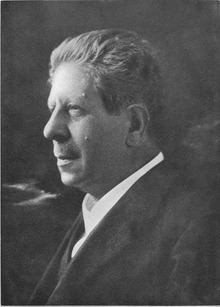Name Giovanni Mingazzini | ||
 | ||
Died December 3, 1929, Rome, Italy | ||
Giovanni Mingazzini (15 February 1859, Ancona – 3 December 1929) was an Italian neurologist.
He trained at the institute of physiology in Rome with Jacob Moleschott (1822-1893), followed by work as an assistant to anatomist Francesco Todaro (1839-1918). Afterwards, he studied neuroanatomy in Munich with Bernhard von Gudden (1824-1886). In 1895 he was appointed professor of psychiatry and neurology at the University of Rome.
Known for his anatomical research of the nervous system, he made important contributions in studies of aphasia, the physiology of the lenticular nucleus, and investigations of the cerebellum and corpus callosum. In his analysis on the origin of motor aphasia, he proposed an hypothesis that opposed the views espoused by Pierre Marie (1853-1940).
When Benito Mussolini came to power in Italy, Mingazzini refused to sign allegiance to Fascism, thus risking deportation to Sardinia. He died on 3 December 1929 of a heart attack.
